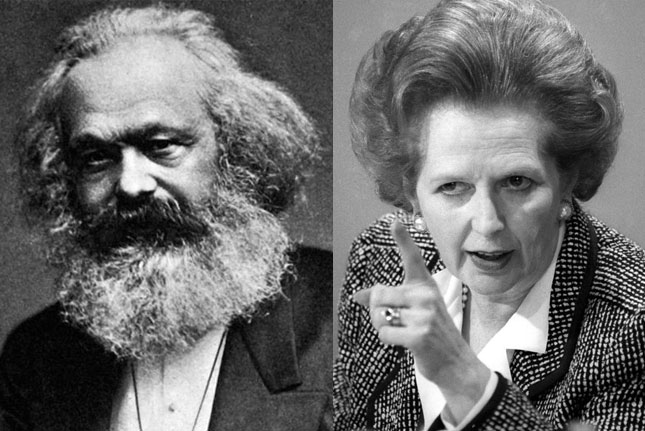ADVERTS
Main differences between Liberalism and Socialism
From the 18th century to the 19th century, Europe and America changed a lot. Because of technological and capitalist growth, many theorists proposed theses concerned with the new system. Many intellectuals invested their time in reforming, rethinking and improving economic, political and social organization.
Capitalism was consolidated when it proved that man could accumulate wealth and exchange humans for machines. The economic model was successful, as it enabled many to fulfill their material desires.
ADVERTS
Even after the Industrial Revolution, everything was not just about benefits, as capitalism has its disadvantages. The main problem revealed by capitalism is social segregation through money. Derived from this came liberalism and socialism.

In the illustration above you can see Karl Marx (Creator of socialist idealism) and Margaret Thatcher, a British politician known for her Liberalist stance.
Liberalism
Liberalism was in accordance with several capitalist characteristics, among them private property, free commercial activity, the growth of entrepreneurs and their wealth. Liberalism preaches that those who work can become rich.
ADVERTS
On the other hand, misery would be a consequence of personal human failure. Therefore, in liberalism the traditional situation between employer and employee remains.
Socialism
Socialism approaches differences in another way. For this theory, inequalities are consequences of the relationship between men.
For socialism, the poor are not only the result of their personal failure, but also of a system that oppresses their growth. For socialism, the businessman is just the tip of the iceberg of an entire social model governed by workers, who work hard to maintain a system that prevents the growth of the class.
Therefore, liberalism and socialism are your theories that fight each other.
